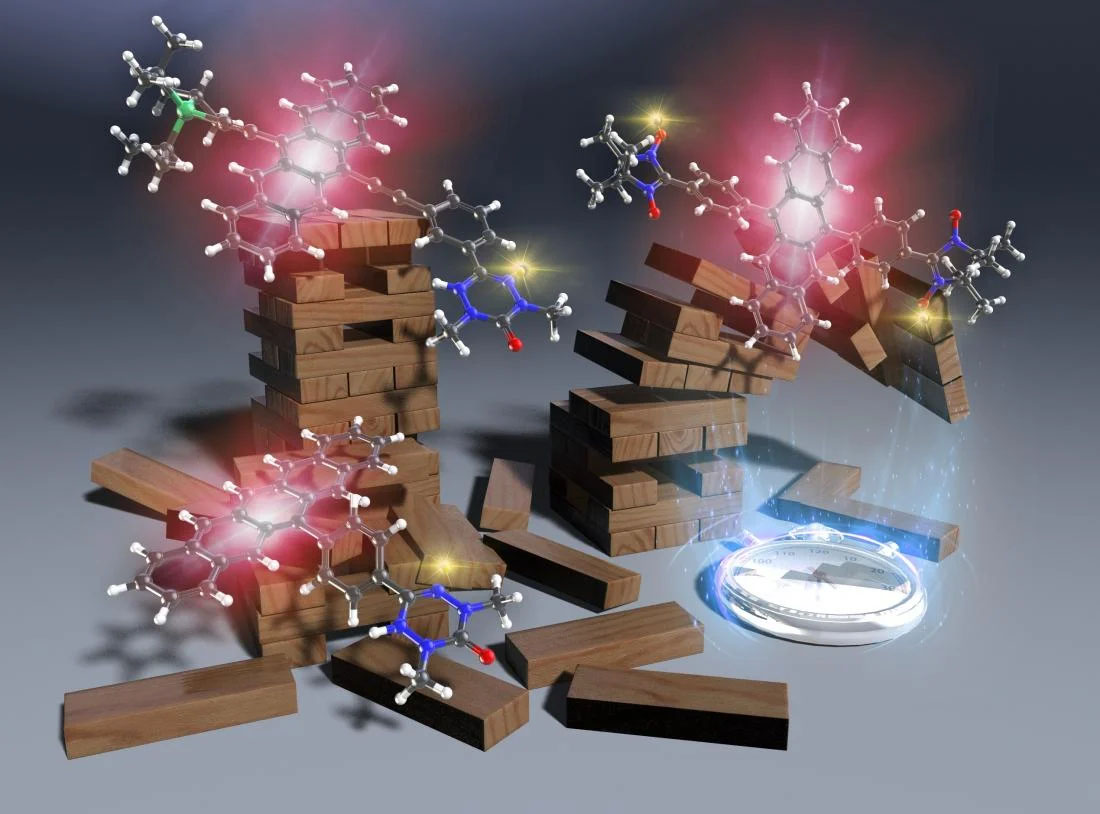| Jun 17, 2022 |
New pentacene derivative has 100 times more light durability
(Nanowerk News) A research group led by Professor Yoshio Teki of the Osaka Metropolitan University Graduate School of Engineering has succeeded in developing a new pentacene derivative that is more than 100 times more photostable than TIPS-pentacene, a photostable pentacene derivative. Additionally, the team has further clarified the ultrafast excited state dynamics in this system.
|
|
The findings have been reported in Physical Chemistry Chemical Physics ("π-Topology and ultrafast excited-state dynamics of remarkably photochemically stabilized pentacene derivatives with radical substituents").
|
|
In the pentacene moiety of this system, the scientists were able to demonstrate that the transition from the excited singlet state to the excited triplet state occurs ultrafast in the time region of a 10-13 seconds. In purely organic materials without heavy atoms such as rare metals, such intersystem crossing usually occurs on time scales longer than 10-9 seconds. The empirical results of this study are expected to be applied as a method for stabilizing and developing light-unstable materials in the future.
|
 |
| Light instability is a major factor preventing organic semiconductors from being implemented. Researchers from Osaka Metropolitan University demonstrated the ultrafast intersystem crossing of the pentacene moiety in pentacene radical links made the organic semiconductor much more photostable. This is the fastest enhanced intersystem crossing (~10-13 seconds) demonstrated in a purely organic material without heavy atoms. (Image: Yoshio Teki)
|
|
Due to their high hole mobility, pentacene and its derivatives have been the representative organic semiconductors and have been the subject of much research, both basic and applied. In particular, they are expected to be applied to semiconductor devices such as field-effect transistors. In addition, organic semiconductors have the advantage of being inexpensive to produce by inkjet printing and having low environmental impacts because they do not use metals.
|
|
However, the backbone of organic semiconductors such as pentacene easily reacts with oxygen molecules under visible light, resulting in the loss of useful properties.
|
|
A research group led by Professor Yoshio Teki of the Graduate School of Engineering, Osaka Metropolitan University, has achieved photostability more than 100 times higher than that of TIPS-pentacene, a famous commercially-available pentacene derivative, by increasing the planarity of the molecule and strengthening the conjugation of π electrons between a radical substituent and pentacene moiety.
|
|
At the same time, to elucidate the mechanism of the remarkable photostability, ultrafast transient absorption measurements using a femtosecond pulsed laser were performed to clarify the peculiar excited-state dynamics of this system.
|
|
Focusing on the pentacene moiety of the system, they found that intersystem crossing occurs at an ultrafast rate (10-13 seconds), which has never been achieved before in purely organic materials containing no heavy atoms. Furthermore, the subsequent ultrafast deactivation to the ground state was observed to occur within a time of about 10-10 seconds.
|
|
“Excellent photostability was achieved by adding a radical substituent that enhances the planarity of the molecules and strengthens the conjugation of π electrons,” stated Professor Teki. “In the future, we would like to verify the performance of field-effect transistors and apply them as organic semiconductors.”
|

